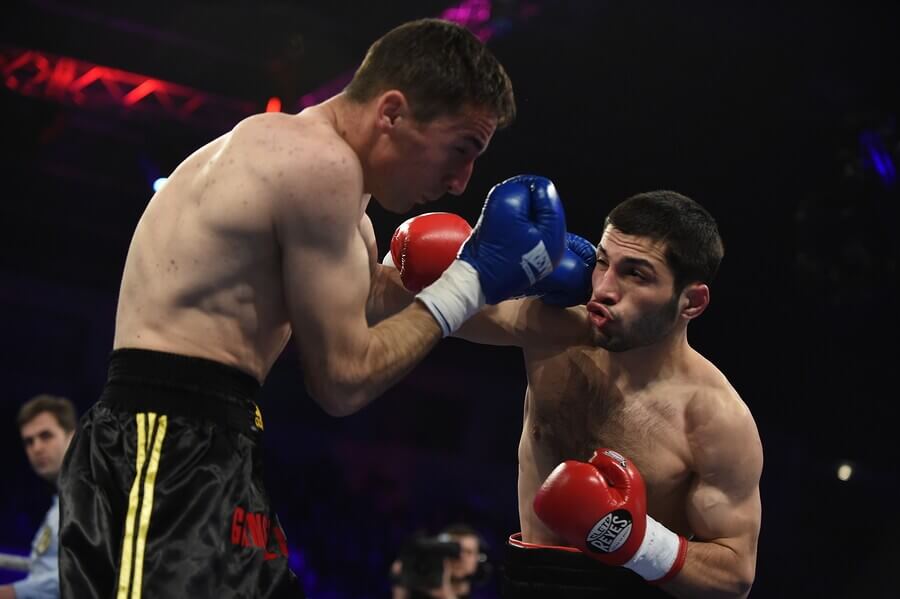Ethics in Boxing

Currently, countless fans follow boxing but its popularity has also started many debates. For fans, boxing is a passion; it’s an art that demands utmost dedication and discipline both in and out of the ring. In the other corner, people against boxing argue that the sport lacks ethics.
Violent practice or sport?
Boxing is a sport that goes back in history and has always interested sports fans. But, in past decades, people have been brewing a negative perspective about boxing because they associate it with violent practice.
In some cases, this negative image is only strengthened by certain cinematographic representations that portray boxers as violent.
They reduce boxers to solitary, cold, violent beings that fuel their punches with hate and bypass their morals to claim victory. In short, they fit the bill for a classic killer that enters the ring to finish the rival.
But, this killing-machine image is completely fictional. Boxing implies honoring a set of rules of conduct and ethical principles. The International Boxing Association actually provides everyone with the Code of Ethics, which outlines the professional practice and conduct of behavior for fans.
Ethics in boxing: is it violent?
Facing this question, sociology can be a powerful ally; especially because it explains the importance of differentiating the types of aggressiveness in violence. Simply put, aggressiveness is a natural, inherent impulse in all animals, even human beings.

Aggressive behavior normally starts as the last resort for safety or well-being. Thus, the behavior is usually a result of a survival instinct. And boxing puts participants in this kind of situation and, in turn, does imply a degree of aggression.
Meanwhile, violence has long carried negative cultural and social implications. People understand violence as an action or behavior that goes against ethics or moral principles; ethics outline peaceful conduct that’s socially acceptable as well as normal reaction times.
Thus, we can’t mark professional boxing as a violent act and much less as a sport that encourages violence. In a boxing ring, there are two athletes who voluntarily dedicate themselves to the practice. They respect the rules and ethics that regulate boxing.
Psychological preparation for boxing
We’ve all heard about the physical training that professional boxers have to maintain on a daily basis. Their training demands pure dedication and determination.
Boxing workouts combine different exercises to improve their endurance and strength, in addition to muscle definition. Their workouts are so successful that they’ve been sources of inspiration for gym routines for fitness fans as well.
However, we should never forget that boxers also receive intense psychological training to box in an ethical and healthy manner.

Having to face an opponent for twelve rounds in a ring requires a lot more than just physical stamina and ability. Boxers can only withstand the pressure if they’re psychologically sound.
As with every athlete in any other sport, boxers must be prepared physically and mentally to step into the ring; they also have to respect the rules and principles of the sport. Among the key aspects of psychological and emotional strength are understanding limits and the principle morals of boxing.
One of the main notions that boxers have to assume when becoming professional is understanding that their skills only have a place in boxing. Before stepping into the ring, they need to be conscious of their strength and understand their capabilities; they need to understand that when wrongfully applied, their skills can be lethal to others.
Thus, the action always takes place within the ring. In this space, punches are both a legitimate and necessary means of progressing and claiming victory. Limiting the action to the ring is one of the principal notions that form the ethical code of boxing.
Currently, countless fans follow boxing but its popularity has also started many debates. For fans, boxing is a passion; it’s an art that demands utmost dedication and discipline both in and out of the ring. In the other corner, people against boxing argue that the sport lacks ethics.
Violent practice or sport?
Boxing is a sport that goes back in history and has always interested sports fans. But, in past decades, people have been brewing a negative perspective about boxing because they associate it with violent practice.
In some cases, this negative image is only strengthened by certain cinematographic representations that portray boxers as violent.
They reduce boxers to solitary, cold, violent beings that fuel their punches with hate and bypass their morals to claim victory. In short, they fit the bill for a classic killer that enters the ring to finish the rival.
But, this killing-machine image is completely fictional. Boxing implies honoring a set of rules of conduct and ethical principles. The International Boxing Association actually provides everyone with the Code of Ethics, which outlines the professional practice and conduct of behavior for fans.
Ethics in boxing: is it violent?
Facing this question, sociology can be a powerful ally; especially because it explains the importance of differentiating the types of aggressiveness in violence. Simply put, aggressiveness is a natural, inherent impulse in all animals, even human beings.

Aggressive behavior normally starts as the last resort for safety or well-being. Thus, the behavior is usually a result of a survival instinct. And boxing puts participants in this kind of situation and, in turn, does imply a degree of aggression.
Meanwhile, violence has long carried negative cultural and social implications. People understand violence as an action or behavior that goes against ethics or moral principles; ethics outline peaceful conduct that’s socially acceptable as well as normal reaction times.
Thus, we can’t mark professional boxing as a violent act and much less as a sport that encourages violence. In a boxing ring, there are two athletes who voluntarily dedicate themselves to the practice. They respect the rules and ethics that regulate boxing.
Psychological preparation for boxing
We’ve all heard about the physical training that professional boxers have to maintain on a daily basis. Their training demands pure dedication and determination.
Boxing workouts combine different exercises to improve their endurance and strength, in addition to muscle definition. Their workouts are so successful that they’ve been sources of inspiration for gym routines for fitness fans as well.
However, we should never forget that boxers also receive intense psychological training to box in an ethical and healthy manner.

Having to face an opponent for twelve rounds in a ring requires a lot more than just physical stamina and ability. Boxers can only withstand the pressure if they’re psychologically sound.
As with every athlete in any other sport, boxers must be prepared physically and mentally to step into the ring; they also have to respect the rules and principles of the sport. Among the key aspects of psychological and emotional strength are understanding limits and the principle morals of boxing.
One of the main notions that boxers have to assume when becoming professional is understanding that their skills only have a place in boxing. Before stepping into the ring, they need to be conscious of their strength and understand their capabilities; they need to understand that when wrongfully applied, their skills can be lethal to others.
Thus, the action always takes place within the ring. In this space, punches are both a legitimate and necessary means of progressing and claiming victory. Limiting the action to the ring is one of the principal notions that form the ethical code of boxing.
All cited sources were thoroughly reviewed by our team to ensure their quality, reliability, currency, and validity. The bibliography of this article was considered reliable and of academic or scientific accuracy.
- Maykel Balmaseda Alburquerque. 2011. Análisis de las acciones técnico-tácticas del boxeo de rendimiento. Universidad del País Vasco. Extraído de: https://addi.ehu.es/bitstream/handle/10810/12478/balmaseda.pdf?sequence=1&isAllowed=y
- Wacquant, L. 2012. Entre las cuerdas, cuadernos de aprendiz de boxeador. Extraído de: https://planificacionalainvestigacion.files.wordpress.com/2012/03/24280981-wacquant-loic-entre-las-cuerdas-cuadernos-de-un-aprendiz-de-boxeador-2000.pdf
This text is provided for informational purposes only and does not replace consultation with a professional. If in doubt, consult your specialist.








